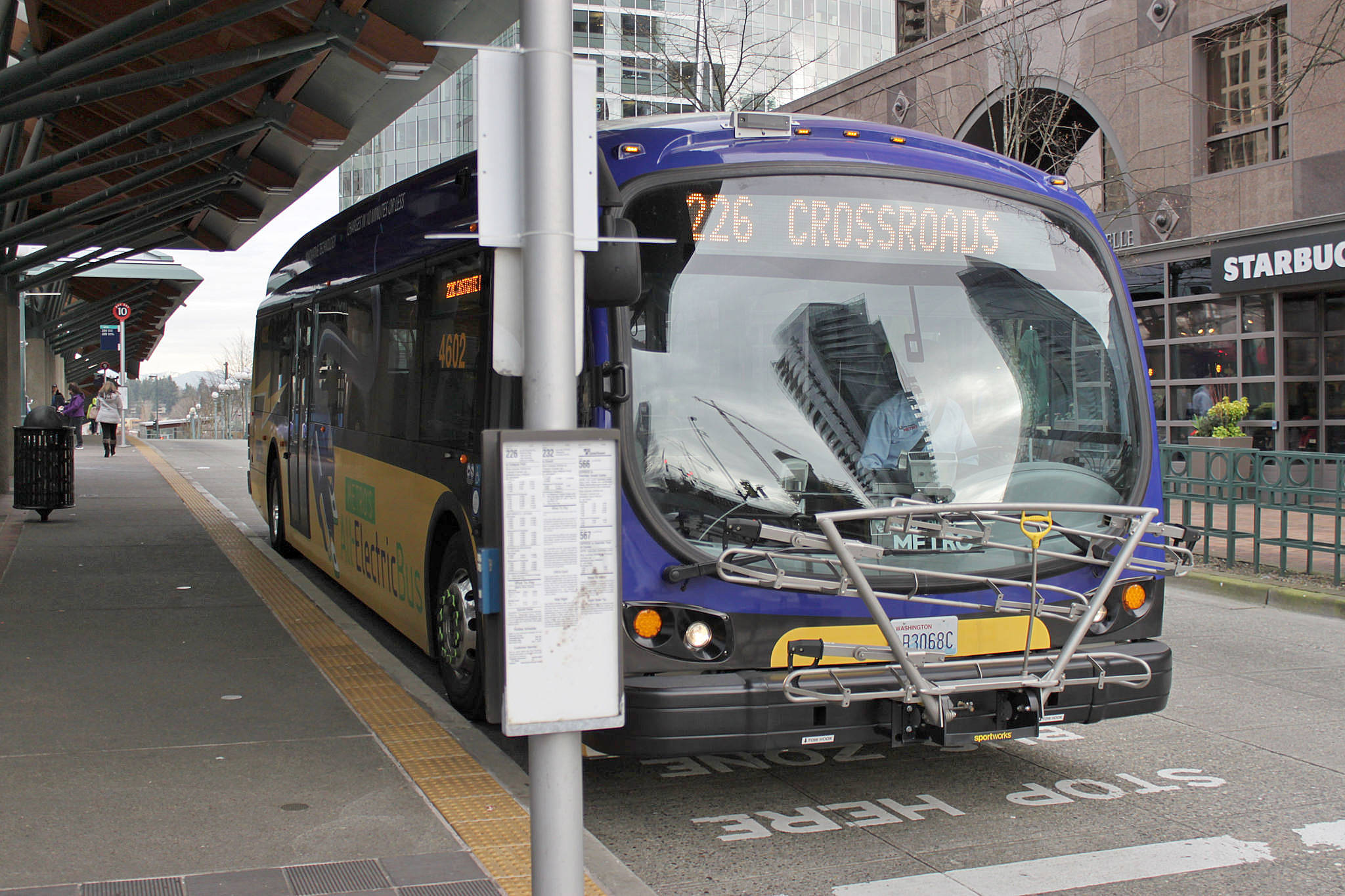A proposal to make Metro fares free for low-income households could be approved in the coming months.
The ordinance was recommended by committee to the King County Council, which will vote on whether to allow households earning less than 80 percent of the federal poverty level — and which are using one of six state programs — to enroll in a fully subsidized transit program. Those who qualify would be allowed to ride Metro transit free of charge.
The program’s net cost will likely be $6 million in the first year and average $10 million in subsequent years, according to county documents. The overall costs could be reduced if other organizations, such as Sound Transit, additionally participated. The county is in negotiations with Sound Transit and Seattle to try and include them in the plan.
The plan was presented Feb. 12 at a Mobility and Environment Committee meeting.
In 2016, the county updated its public transportation plan, which includes several fare categories. The Transit Riders Union worked with the county to make recommendations on how to better serve residents.
“This program that you’re considering today is really the first fruits of that work,” said Katie Wilson of the Transit Riders Union. “We are extremely excited to see this come to fruition.”
King County already has a reduced fare option for people earning below 200 percent of the federal poverty level. That tier of ORCA Lift gives riders trips at a reduced fare of $1.50, about a 45 percent discount.
The proposed program would target even lower-income residents. The federal poverty level for a family of four is about $26,000, meaning that same family would qualify if it made less than $21,000.
To receive the fully subsidized cards, individuals would also have to be using services from the state’s Temporary Assistance for Needy Families, Refugee Cash Assistance, Aged, Blind, or Disabled Cash Assistance, Pregnant Women Assistance, Supplemental Security Income or Housing and Essential Needs programs.
“By serving people who have very little or no income and cannot afford Metro’s existing low-income fare programs, the proposed program will fill a gap,” county documents state.
The county could expand the program in coming years to include more community agencies that serve people making less than 80 percent of the federal poverty level.
Some 54,000 people in the county could use the program. Around 30 percent of those are under age 18. If the eligibility lid were lifted to 138 percent of the federal poverty level, up to 261,000 people would qualify.


